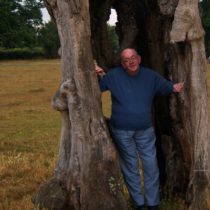Landscape Architecture for Landscape Architects › Forums › PLANTS & HORTICULTURE › West Coast (US) LAs…Do you refer to “Sunset” Climate Zones?
- This topic has 1 reply, 5 voices, and was last updated 16 years, 11 months ago by
 Bill Kisich.
Bill Kisich.
-
AuthorPosts
-
December 8, 2008 at 4:13 am #175860
 Eric GilbeyParticipant
Eric GilbeyParticipantLast week I was in California, talking to landscape designers and the topic of plant (USDA) hardiness zones came up. Supposedly, the use of Sunset’s Garden Climate Zones are preferred over the USDA Hardiness Zones. see this link
Is this true with West Coast (US) Landscape Architects, too? Any other LAs who use this classification? If so, this native Ohioan, now East Coaster, would like to know your reason for this preference, and if using Sunset’s Climate Zones has proven to be more successful than USDA’s Plant Hardiness Zones (thinking sustainable planting design)…or even if there is a need to use both. Thanks for your input!December 11, 2008 at 7:07 pm #175865 Bill KisichParticipant
Bill KisichParticipantHere in the Phoenix metro area we are in USDA zone 9 and 10 I believe. Sunset zone 12 and 13. Few people here are familiar with Sunset zones except the nurseries. Most publish the USDA information only though.
I have always had issues with the USDA listing. We share some of the same USDA zones with the Los Angeles – San Diego areas. However, many of the plants that thrive on the South West coast will not survive the summer here although the winters are similar. Sunset does have Phoenix in a completely different zone.
I like to stay in the field a lot and have become familiar with the plants that grow well here. As I’m sure many others do, I have my own list of favorite performers and I specify locally grown plant material whenever possible. Additionally I don’t design or work in other climates, so for me I guess it isn’t that big an issue.
You have me thinking now, though. Another line on the January To-Do-List.
December 11, 2008 at 8:17 pm #175864 Eric GilbeyParticipant
Eric GilbeyParticipantBill,
Many that I have talked to (not from the West Coast) have said they haven’t even heard of the Sunset Zones, or if they did, they recognize that Sunset usually has more to say about Western States interests. But they all are captivated by the way Sunset derives these zones by incorporating “length of growing season, timing and amount of rainfall, winter lows, summer highs, and humidity”. So, now I immediately think is there more for USDA to consider than “lowest temperatures”, and if we are considering the plant tolerances, and preferences, wouldn’t following a more inclusive manner of mapping out the climate zones around the US help us to choose the most appropriate plant for the region (first) then consider how the site’s conditions further impact the plant choice. Seems like a good guide in selecting locally successful or native plants, as you are finding. Thanks for the response.December 12, 2008 at 3:20 pm #175863 Clayton MunsonParticipant
Clayton MunsonParticipantThe best way to select plants is by experience, either personal or through a local nursery. A problem that I often come across is that here in Phoenix we have the extreme heat that is taken into account in all the zoning books and plant descriptions. But we also have a high probability of frost in the winter months. Many of the plants that love the high heat can’t always handle a frost. Two years ago we had a frost that cost millions of dollars in damage just on Ficus.
Phoenix has places where it can even snow, if the conditions are right.
Where does everyone get their info on cold hardiness?
January 12, 2009 at 6:04 pm #175862 Les BallardParticipant
Les BallardParticipantI feel sure all mean well by making such designations and that may extend elsewhere ‘ere long. Personally, however, I don’t think I would fail to combine what the designation is supposed to mean and what viewing and testing the site will tell me.
I like to talk to people to see what they know about and/or mean by the shorthand they use. West Coast Americans particularly use euphemisms or gobbledegook (to me) and I hope not to be too embarrassed to ask what folk really mean. That said, one patch of soil is different from the next, broadly, or else it is going to be replaced anyway with something from the garden centre and we all need to know where we stand on this before making a planting schedule. Soil analysis can be by asking the residents, tasting it or using a do it yourself soil analysis kit, or whatever; but do not believe anything you are told by the client – but never ignore it.
Luv n Lite
Les BallardJanuary 12, 2009 at 11:39 pm #175861Dennis J. Jarrard, PLA, CLARB
ParticipantI am from the midwest and have been educated here as well. The first company I worked for out of college was a major national developer and I worked on a lot of projects all along the west coast. Through my landscape architect contacts on the West coast I quickly learned of the Sunset Climate zones and have found them very useful. As others posters have mentioned there are so many different microclimates in these areas and the Sunset Zones do a good job in narrowing down plant material suitable for the area. However, I to have found that being in contact with local designers is always more helpful then any book I have used. I also found it very helpful to contact the local horticulturalist through Cooperative Extension in every location that I was doing work.
Hope this is helpful to you. -
AuthorPosts
- You must be logged in to reply to this topic.


